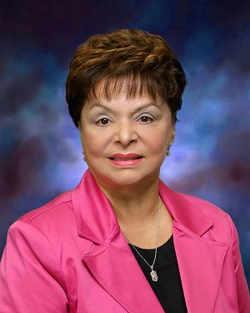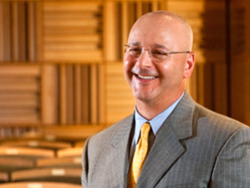Will Local Workers Get Fair Shot at Jobs
On $66.7 Million School Construction?
By Frank Parlato
It was said that if the Niagara Falls School District referendum was approved last September, to invest some $66.7 million worth of capital improvements into the district’s 11 campuses, local union workers would have plenty of work during the next five years.
“All work is going to be done by union workers, that’s part of the contract,” said Cynthia Bianco, superintendent of the Niagara Falls schools, prior to the referendum. The Niagara Falls Reporter endorsed the project and wrote a series of articles explaining the details of the referendum, providing good reasons for the public to approve it.
One justification for our strong support was that the project would create jobs for local laborers and tradesman, multiplying the benefit to the community.
We were told that the parents of the children in the school district itself would be getting the jobs. The people who live here would be rebuilding their own schools.
After the referendum passed, Superintendent Bianco reiterated her earlier pledge, saying that, “We’re pleased the community chose to support the referendum. It will mean a lot to our school district, and our children. It will also mean a lot to the trades-people of the community who will have jobs from this…. It is a win-win.”
There appears, however, to be a wrinkle creeping in now, caused perhaps by the Buffalo project developer who may be angling to get more Buffalo workers-and consequently less Niagara Falls workers-into the project.
Is this the truth or a matter of conjecture?
Some say it is the case. Others deny it, both on and off the record.
What is clear is that negotiations are underway which will determine what percentage of local union, non-union, and/or out-of-town union labor will work on the project of rebuilding and improving Niagara Falls schools.
Laborers Local 91 Business Manager, Richard Palladino, told the Reporter that, based on what the Buffalo Project Developer, L. P. Ciminelli, has presented so far on behalf of the school district, there is a thrust to revise the former project labor agreement (PLA), which he sees as satisfactory to one that will “jeopardize” the interests of his union members and will turn the project over, in essence, to Buffalo interests and out-of-town contractors, who can bring along their own employees to do most of the work.
And, by “out-of-town” workers, we are rightfully including Buffalo workers. Just as much as we suspect that Niagara Falls workers traveling to work in Buffalo, going into Buffalo’s district, where Buffalo natives pay school taxes, and where Buffalonian children go to school, would be viewed as “out-of-town” workers themselves.
Palladino said he was angry about this because many in his 687-member union and their extended families came out to vote to support the referendum’s passage. Without such support, he said, the referendum may not have passed.
The referendum, which was held on September 25th, saw low overall voter turnout. The strong union support may have been pivotal. Only around 15 percent of eligible voters, about 3,500 out of the 25,000 city residents who are registered to vote, bothered to turn out.
While the measure received 87 percent support, the swing of a mere 1,000 votes would have defeated the referendum, which needed a super majority of 60 percent to pass.
“We were instrumental in helping educate the voters of Niagara Falls as to the benefits of passing the referendum,” Palladino said. “To turn around now – after all we’ve done - and change our PLA doesn’t sit well with me.”
A similar referendum failed to achieve even a simple majority the year before, with about 300 voters making the difference between passing and failing to approve the $130 million project.
Palladino expressed concern with several changes from the existing PLA, and those being now proposed.
The school district hired Seeler Engineering Inc,. of Pittsford, New York, to conduct an analysis of the economic and non-economic benefits of a new PLA for the project, including tag-along percentages, in order to justify the position of the school district, a public entity, in the event of a challenge to the PLA, and as opposed to using the PLA contracts that are in existence.
“So far, I can’t sign the PLA as it’s being proposed. It doesn’t protect our members and it opens up the likelihood that the project manager (Ciminelli) will hire more out of town or non-union,” said Palladino.
“As it stands now, our union would be lucky to get 33 percent of the laborers work.”
While a number of issues are being negotiated, including eliminating paid holidays, paying straight-time for weekend work and make-ups and the elimination of overtime, the present proposal, according to Palladino, could require laborers to work three straight 12 ½ hour days. The biggest item, and the one that will determine the true nature of local participation in this project, is determining what percentage of workers will be “core-employees” or “tag-along” employees under the new agreement.
“Tag-along” or “core” employee provisions are placed in most PLA agreements in order to promote competitive bidding. The purpose is that if companies who bid on work cannot bring key or core employees to work on the jobs, some otherwise qualified companies will not bid, and others will have to bid at higher numbers, since they cannot use enough of their trained workers.
In most PLA agreements, the tag along or core employee provisions range between 25-50 percent. A 33 percent tag-along percentage would mean that, for every two workers from the local union hall, a contractor can bring one of his key employees in.
It is clear that the district as the “owner” hopes to get as much work done with taxpayer money as it can, and the nature of the PLA will have a great deal of impact on costs for each aspect of the project.
When contacted by the Reporter, the attorney for the school district, Angelo Massaro, said he has had no part in the negotiations and could not make any comment other than to confirm that L.P. Ciminelli, the project manager, was handling the negotiations and that Ciminelli should not, of course, comment on ongoing negotiations.
Sources say that Ciminelli has presented the higher-end 50 percent tag-along percentage, perhaps in part to help negotiate other elements of the PLA agreement.
Palladino noted that the changes to the PLA, coming as it does in tandem with Ciminelli, a non-union company, being put in charge, suggests that Niagara County union workers will get less than 50 percent of the work, a fact that will be true if the 50 percent tag-along remains in place since many of the Trades Unions encompass both Erie and Niagara County and their Buffalo union workers would not be considered a tag-along.
The capital improvements to the schools are being financed through a plan that will see New York state paying 100 percent of the costs with no local tax money being used to improve all 11 campuses in the district.
The district has indicated that it wishes to avoid a jurisdictional fight over the matter, which would have the effect of imposing prevailing wage rules on the project if one of the local unions decides against being a signatory to the new PLA. This would mean that different rules would govern each of the different units and could impact scheduling work and costs of the project.
While Ciminelli is in charge of negotiating the PLA on behalf of the district with the unions, the school board has the final say.
When contacted by the Reporter, Bianco reiterated her promise and the commitment of the board that this project “will not only benefit the children of this district, but those in the community as well, whether they are citizens, workers or users of our facilities,” she said.
And that includes local union workers?
“Yes,” she said “everyone is going to benefit from this.”


